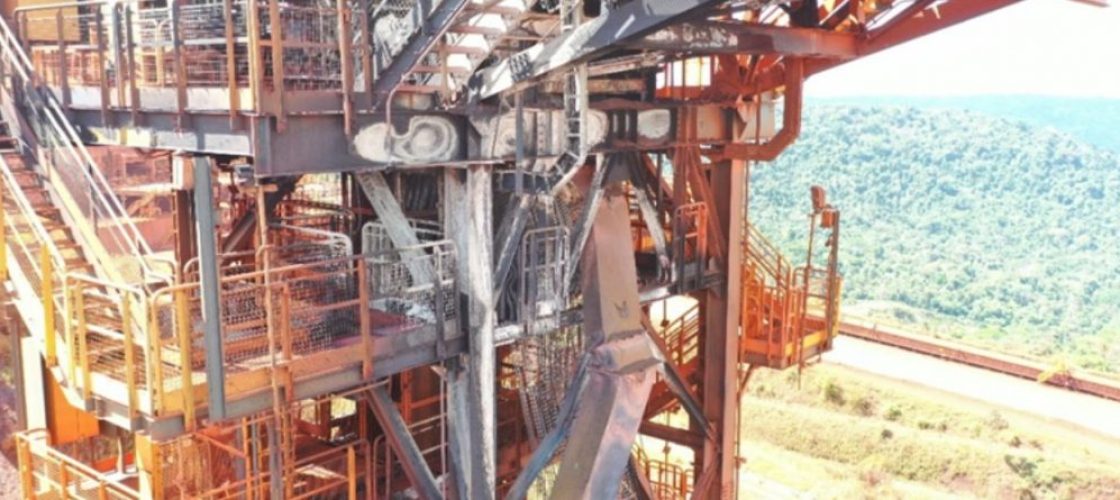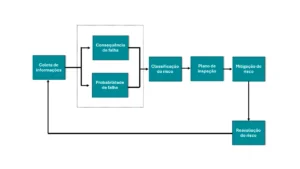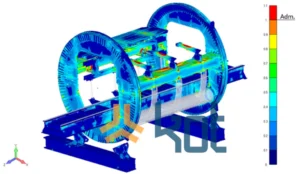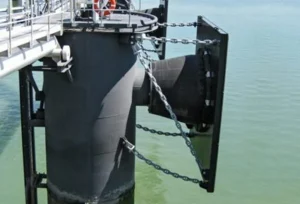Conforme abordado anteriormente no artigo Análise FFS – o que é?, as avaliações de fitness for service desempenham um papel crucial em um sistema de gestão de ativos. Esses estudos visam avaliar se uma estrutura ou equipamento está aptos para operação, mesmo com a presença de danos ou degradações.
The aim of this article is to present some case examples of the application of FFS analysis. See below:
Structures affected by fire - Steel
A relatively common accident that can lead to serious consequences is fire in structures. In this type of situation, it is common to see damage to the regions most affected by the high temperatures, as well as the redistribution of stresses to adjacent elements, due to the degradation of stiffness in critical regions. It is therefore necessary to assess the residual structural capacity of the asset, based on the extent and intensity of the damage, and to define its necessaryfitness for service.
Figure 1 shows the situation of a metal belt conveyor structure after a fire has occurred on the belt.
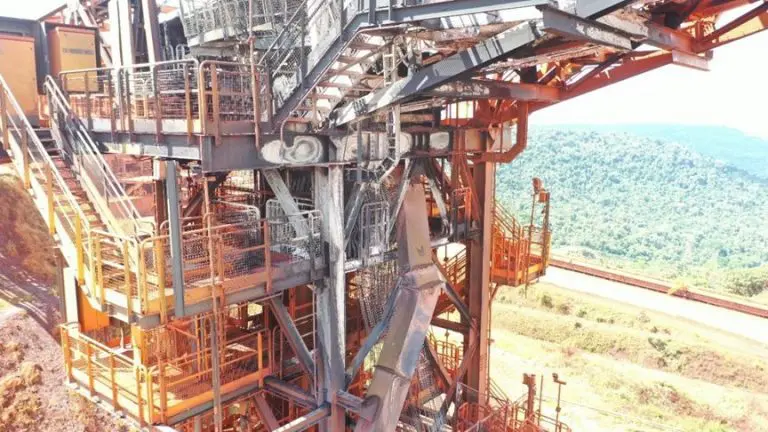
Figure 1: Situation of the structure after the fire.
In this event, the initial characterization of the damage involved classifying the structure into macro-regions in terms of its exposure to temperature, according to the consequences caused to the materials. The elements were assessed through visual inspections, observing aspects such as the presence of paint on the profiles, possible paint degradation, flaking and deformations. Where geometric distortions were identified, replacement of the component was recommended.
In addition, non-destructive tests were carried out to determine the consequences of the high temperature on the elements. One of the tests carried out was the surface hardness measurement, shown in Figure 2, which allows the measured values to be correlated with the material's breaking strength limit. In order to quantify thickness losses due to flaking caused by the fire, thickness measurements were also taken using ultrasound.
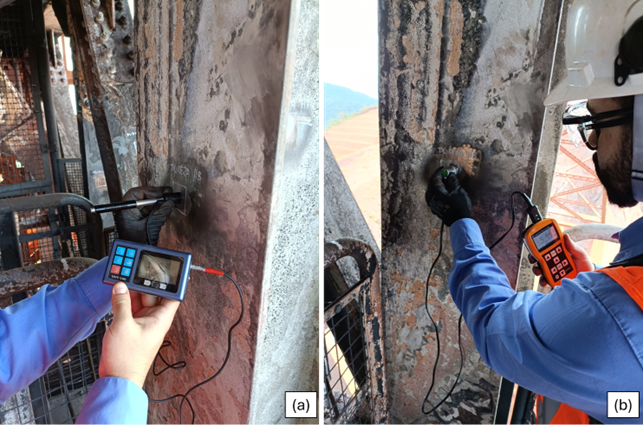
Figure 2: Surface hardness measurement (a) and ultrasound thickness measurement (b).
Once the damage caused by the high temperatures had been identified and quantified, the losses in thickness and strength were taken into account in a finite element computer model used to assess the adequacy of the structure, which indicated the need for reinforcements/replacement of some components. To ensure a proper repair procedure for the asset, this model was also used to plan the component replacement procedures. An example of a study to determine the feasibility of removing elements is shown in Figure 3 and Figure 4. The analyses indicated that even with the removal of structural elements, the utilization rates of the rest of the structure were within the permissible range.
After carrying out the necessary repairs to the critical points identified, the structure was released for use.
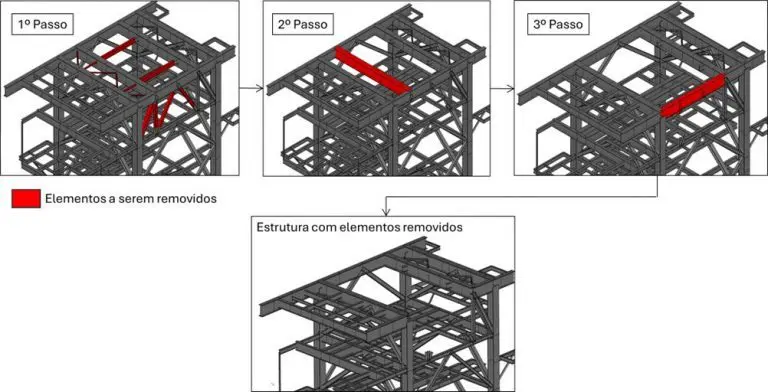
Figure 3: Evaluated disassembly sequence.

Figure 4: Result of the structural analysis with the degraded structure and elements removed.
Thus, the fitness for service assessment was used to enable the planning and execution of all the other works to revitalize the structure affected by the fire, clarifying the risks involved in the procedures and enabling the necessary preventive measures to be drawn up to guarantee the safety of the people and assets involved in the process.
Structures affected by fire - Concrete
Fire can also lead to deterioration and damage to concrete structures. In this sense, a fitness for service analysis should be carried out, in a similar way to that shown for metal structures, to assess the adequacy of the structure or the need for reinforcements.
When it comes to identifying damage, the effects of fire on concrete can be characterized by a change in color. In addition to this visual alteration, there is a loss of resistance which is directly proportional to the temperature to which this type of structure is subjected. In general, failure is expected when the temperature reaches around 600°C, when the aggregates expand and internal tensions develop that fracture the concrete. The assessment of physical damage and degradation of properties should also be validated by means of non-destructive tests and extraction of cores, for proper consideration in computational structural analysis.
Loss of material due to corrosion
Corrosion degradation is one of the most common damage mechanisms in port environments. The damage evolves over time, generating material loss and reducing the structural capacity of the component.
O exemplo aqui apresentado envolve a fixação de um tirante de um descarregador de navios, cuja inspeção estrutural identificou corrosão significativa. Neste caso, a perda de material ocorreu por redução de espessura em parte do componente. Por se tratar de componente sujeito a cargas trativas durante a operação, essa redução tem relação direta com perda de capacidade estrutural. Neste caso, porém, devido à localização da corrosão, a geometria do componente foi levemente alterada, gerando uma redistribuição dos esforços com concentração de tensão na área afetada, acentuando ainda mais a não conformidade.
As this is a degradation mechanism that evolves over time, the corrective measure must be carried out within a period compatible with the evolution of the manifestation and residual structural capacity. A conservative analysis was carried out, considering the critical situation of reduced thickness in the affected region, which still indicated approval for the planned operation.
This result benefits the operation in two ways. Firstly, by allowing scheduled intervention in the asset, avoiding unforeseen downtime. Secondly, by allowing only the recovery of the component and its protective layer by painting, without the need to completely replace the component to recover the design thickness, which would represent a significantly more costly and time-consuming intervention on the asset.
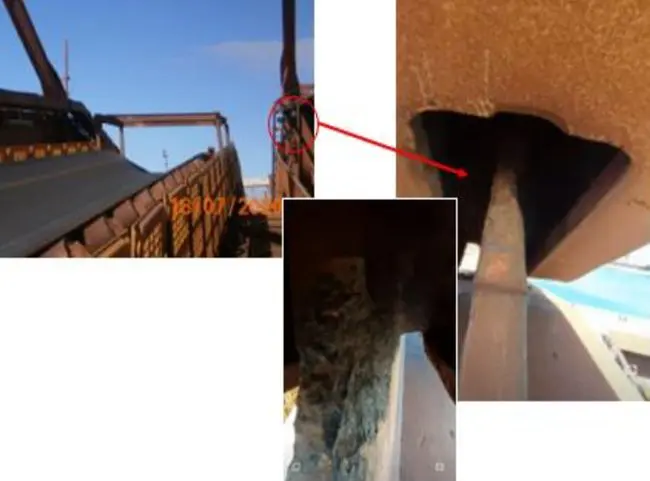
Figura 5: Corrosão com perda de massa severa em chapas de ligação.
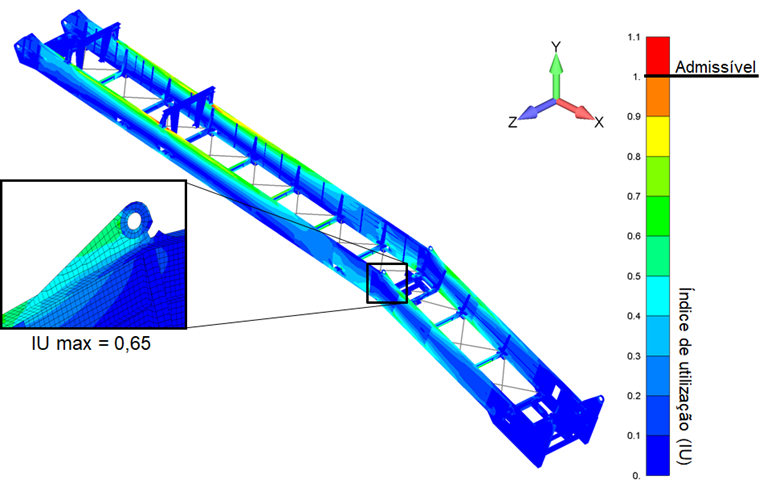
Figura 6: Resultado da análise estática fitness for service – Defeito 14.
Structural deformation
Deformações estruturais são danos comumente observados em inspeções de integridade estrutural. Trata-se de um termo bastante abrangente, que deve ser tratado de maneira distinta conforme natureza da deformidade, tipo de componente e dos esforços atuantes. Deformações elásticas, em geral, não representam problemas estruturais, desde que não ocasionem efeitos de segunda ordem não contabilizados na estrutura, nem causem interferências ou impactos imprevistos. Por outro lado, deformações plásticas levam à redistribuição de tensões e alteração local nas propriedades do material, representando uma causa mais comum de preocupação.
In the example shown here, there is a localized plastic deformation in a ship loader boom, caused by impact, which also generates an angular deformity of the boom as a whole. In this case, the fitness for service assessment must include checks for both, which have different impacts on the asset.
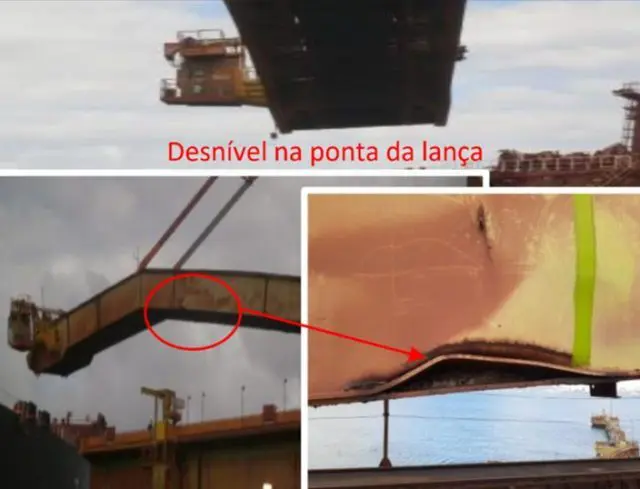
Figura 7: Deformação na mesa inferior da lança do equipamento.
For local plastic deformation, the assessment seeks to reproduce the observed level of deformity in the computer model, computing the distortions due to the impact plus those resulting from the planned operation. In addition to the maximum admissible limits, which vary with each material, the analysis must also consider whether the damage has a tendency to propagate (which can lead to failure due to cyclic plasticity) or to stabilize after the stresses are redistributed and new loads are applied, which can affect the deadline for intervention, if necessary. The state of residual stress in the component can also affect the possibility of panel instability, which should also be studied.
Analysis of the entire superstructure is recommended in the case of global torsional deformation of the boom, since this implies an imbalance between the loads on the tie rods.
In this example, the level of stress expected in the plastic deformation region, in some specific operating situations, exceeds the recommended limits for the material, indicating the need for repair. Correction using the hot mechanical straightening technique was suggested.
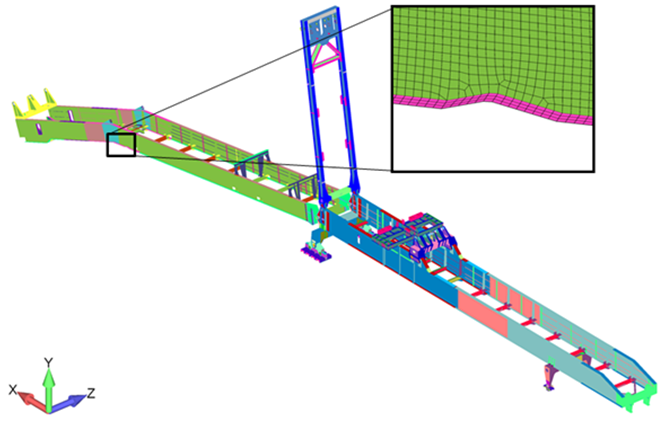
Figura 8: Modelo de elementos finitos do equipamento com implementação do defeito.
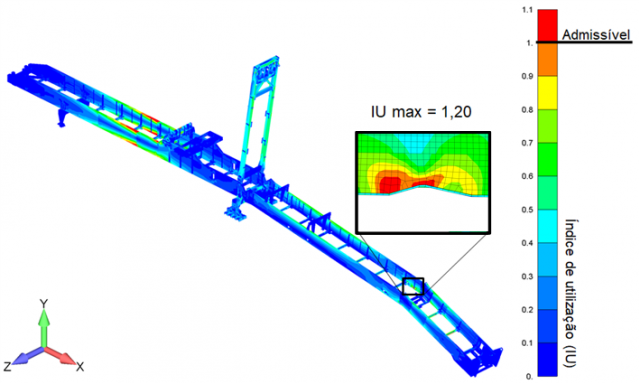
Figura 9: Análise estática de tensões após implementação do defeito no modelo.
Trinca
One of the main initiators of the fitness for service study is the identification of structural cracks, the main concern with this damage mechanism being possible propagation to component failure. In these cases, based on the characterization of the defect identified (dimensions, location, shape), a fracture mechanics assessment is carried out, taking into account the geometry and loads expected on the component, to determine the intensity of stresses at the crack tip and its tendency to propagate.
If a tendency to spread is identified, the analysis also seeks to determine the speed and direction of this development, as well as the critical length, in order to define the time available for intervention and the best actions to be taken.
In the example below, a crack was identified in the connection of a ship unloader tie rod, which is a critical component for the integrity of the asset. Due to its location, the repair intervention is costly and time-consuming. Based on the characterization of the discontinuity and the properties of the structural material, a fracture mechanics study was carried out to determine the expected time until failure, at different operating rates, allowing the person responsible for the asset to plan the maintenance stoppage more appropriately, based on operational demands. Until the repair was carried out, the growth of the defect was monitored on a daily basis.
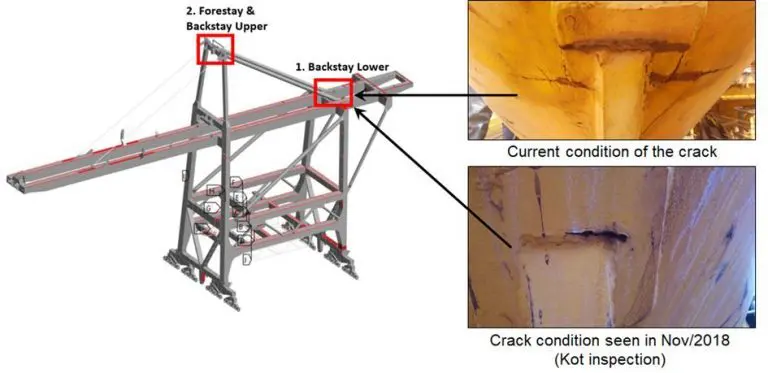
Figure 10: Identification of a crack in a ship unloader tie rod.
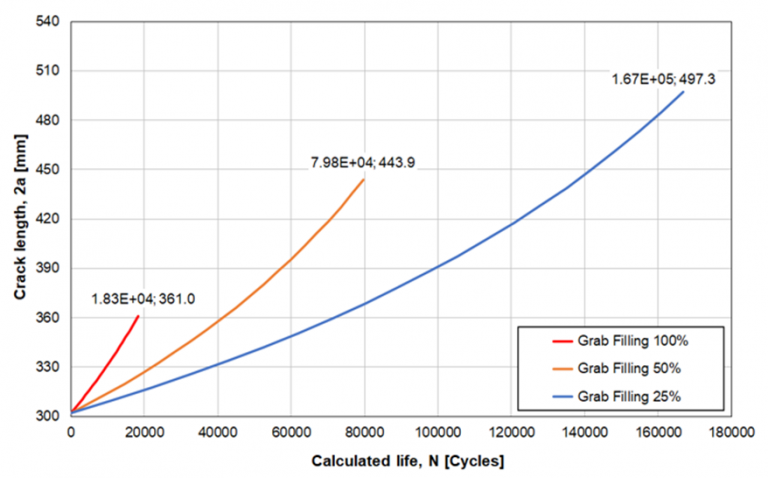
Figura 11: Cálculo de propagação da trinca para várias taxas de operação.
Railroad
The second example of the fatigue damage mechanism concerns railway components. In this case, the client identified a large number of cracks in railway bogie sleepers, leading to the scrapping of the components.
Most of these sleepers had been in operation for decades, indicating that the cracks were in fact related to an end-of-design-life and it could therefore be expected that other cracks would appear in the other hundreds of these components that remained in operation. Therefore, due to the large number of assets and the inherent limitations of the railroad's downtime, it would be beneficial for the client to identify an admissible timeframe for replacement, based on the characteristics of the discontinuities observed, thus creating a criterion for scrapping these sleepers. With this, replacements can be carried out on a scheduled basis, minimizing the impact and without the need for early replacement of components that still have adequate residual capacity.
In order to determine these scrapping criteria, a finite element computer model of the element was created, based on a 3D scan of the part's geometry. The sleepers were also instrumented with strain gauges to acquire the acting loads during a journey of approximately 1,000 km. The measured loads were treated statistically and applied to the structural model in order to calculate crack propagation using fracture mechanics theory and assess the component'sfitness for service for each crack configuration. The results were then compiled to draw up the criteria and scrapping plan for the crossbar.
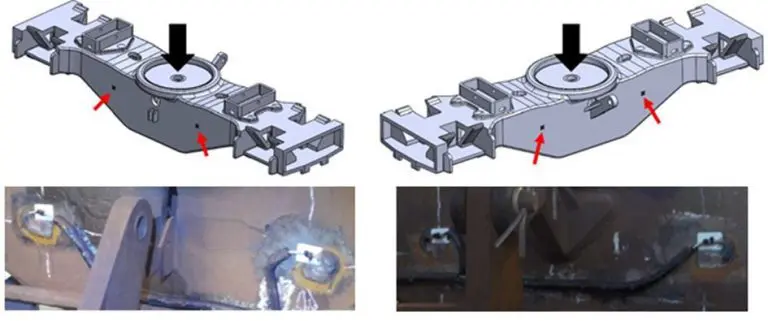
Figure 12: Location of the extensometry points on the beam.
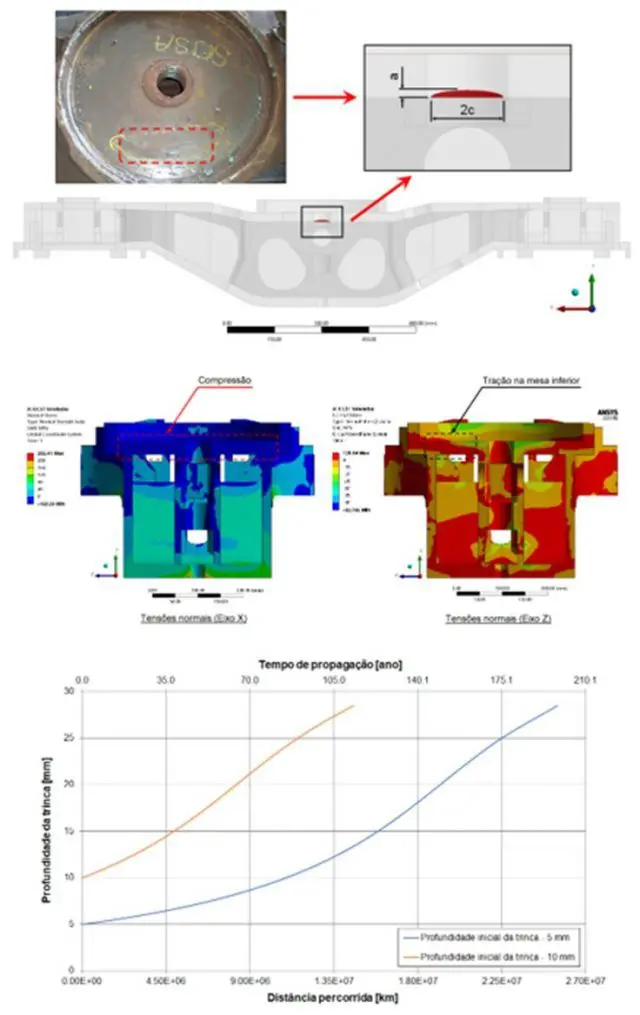
Figure 13: Example of crack configuration evaluated to define scrapping criteria.
Conclusion
From these examples, it can be concluded that FFS analysis has a wide range of applications, emphasizing the importance of these assessments in asset management. From metal and concrete structures affected by fires, to components subject to corrosion, deformation and cracks, each case highlights the need to assess the residual operating capacity of assets even in situations of degradation.
FFS analysis makes it possible not only to identify the severity of damage, but also to determine feasible deadlines for interventions, minimizing unexpected downtime and safely extending the useful life of components. The use of finite element computer models, non-destructive testing and detailed inspections are key to drawing up repair and replacement plans, ensuring the continuity of operations without compromising the integrity of the assets.
Dessa forma, esse tipo de estudo se consolida como uma ferramenta essencial para o planejamento estratégico de manutenção e melhoria de recursos em sistemas industriais e ferroviários. Consulte nossa equipe e conheça nossos serviços!
Siga também nossas páginas no LinkedIn, Facebook e Instagram para continuar acompanhando nossos conteúdos.
